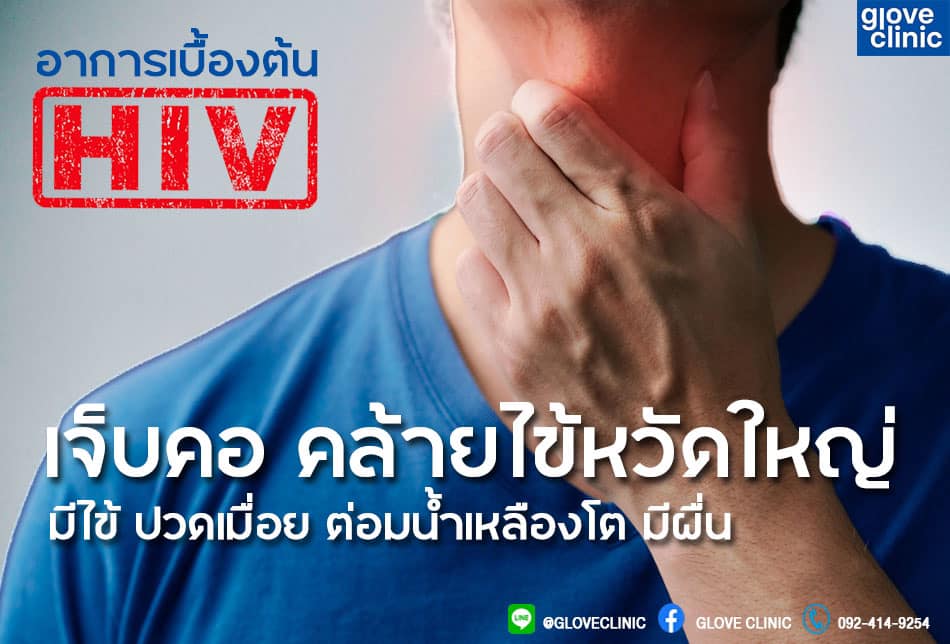294/1 Asia Building (11th Floor), Phyathai, Bangkok
ตรวจ HIV รีวิวความรู้สำหรับการตรวจเอชไอวี (HIV test)
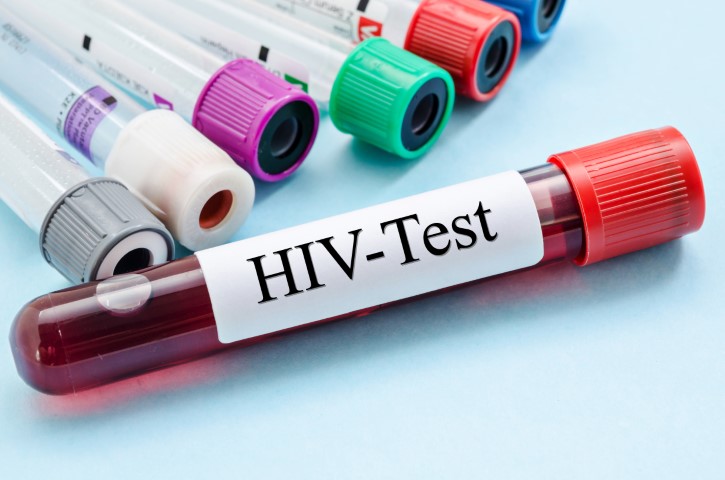
What is HIV/AIDS?
HIV stands for human immunodeficiency virus, which is the virus that causes HIV infection. The abbreviation “HIV” can refer to the virus or to HIV infection.
AIDS stands for acquired immunodeficiency syndrome. AIDS is the most advanced stage of HIV infection.
HIV attacks and destroys the infection-fighting CD4 cells of the immune system. The loss of CD4 cells makes it difficult for the body to fight off infections and certain cancers. Without treatment, HIV can gradually destroy the immune system and advance to AIDS.
How is HIV transmitted?
The spread of HIV from person to person is called HIV transmission. HIV is spread only in certain body fluids from a person who has HIV. These body fluids include blood, semen, pre-seminal fluid, vaginal fluids, rectal fluids, breast milk. HIV transmission is only possible through contact with HIV-infected body fluids.
– Having anal or vaginal sex with someone who has HIV without using a condom or taking medicines to prevent or treat HIV
– Sharing injection drug equipment (works), such as needles, with someone who has HIV
The spread of HIV from a woman with HIV to her child during pregnancy, childbirth, or breastfeeding is called mother-to-child transmission of HIV.
You can’t get HIV by shaking hands or hugging a person who has HIV. You also can’t get HIV from contact with objects such as dishes, toilet seats, or doorknobs used by a person with HIV. HIV is not spread through the air or in water or by mosquitoes, ticks, or other blood-sucking insects.
What are the symptoms of HIV/AIDS?
Within 2 to 4 weeks after infection with HIV, some people may have flu-like symptoms, such as fever, chills, or rash. The symptoms may last for a few days to several weeks. During this earliest stage of HIV infection, the virus multiplies rapidly.
After the initial stage of infection, HIV continues to multiply but at very low levels. More severe symptoms of HIV infection, such as signs of opportunistic infections, generally don’t appear for many years. (Opportunistic infections are infections and infection-related cancers that occur more frequently or are more severe in people with weakened immune systems than in people with healthy immune systems.)
Without treatment with HIV medicines, HIV infection usually advances to AIDS in 10 years or longer, though it may advance faster in some people.
HIV transmission is possible at any stage of HIV infection—even if a person with HIV has no symptoms of HIV.
How is AIDS diagnosed?
Symptoms such as fever, weakness, and weight loss may be a sign that a person’s HIV has advanced to AIDS. However, a diagnosis of AIDS is based on the following criteria:
– A drop in CD4 count to less than 200 cells/mm3. A CD4 count measures the number of CD4 cells in a sample of blood. OR
– The presence of certain opportunistic infections.
Although an AIDS diagnosis indicates severe damage to the immune system, HIV medicines can still help people at this stage of HIV infection.
What is the treatment for HIV?
The treatment for HIV is called antiretroviral therapy (ART). ART involves taking a combination of HIV medicines (called an HIV treatment regimen) every day. ART is recommended for everyone who has HIV. ART can’t cure HIV, but HIV medicines help people with HIV live longer, healthier lives. ART also reduces the risk of HIV transmission.
How can I reduce my risk of getting HIV?
Anyone can get HIV, but you can take steps to protect yourself from HIV infection.
– Get tested and know your partner’s HIV status. Talk to your partner about HIV testing and get tested before you have sex.
– Choose less risky sexual behaviors. HIV is mainly spread by having anal or vaginal sex without condom or without taking medicines to prevent or treat HIV.
– Use condoms. Use a condom correctly every time you have sex.
– Limit your number of sexual partners. The more partners you have, the more likely you are to have a partner with poorly controlled HIV or to have a partner with a sexually transmitted disease (STD).
– Get tested and treated for STDs. Insist that your partners get tested and treated, too. Having an STD can increase your risk of becoming infected with HIV or spreading it to others.
– Talk to your health care provider about pre-exposure prophylaxis (PrEP). PrEP is an HIV prevention option for people who don’t have HIV but who are at high risk of becoming infected with HIV. PrEP involves taking a specific HIV medicine every day.
– Don’t inject drugs. But if you do, use only sterile drug injection equipment and water and never share your equipment with others.
Reference : https://aidsinfo.nih.gov/understanding-hiv-aids/fact-sheets/19/45/hiv-aids–the-basics
Make Appointment





Relate content :
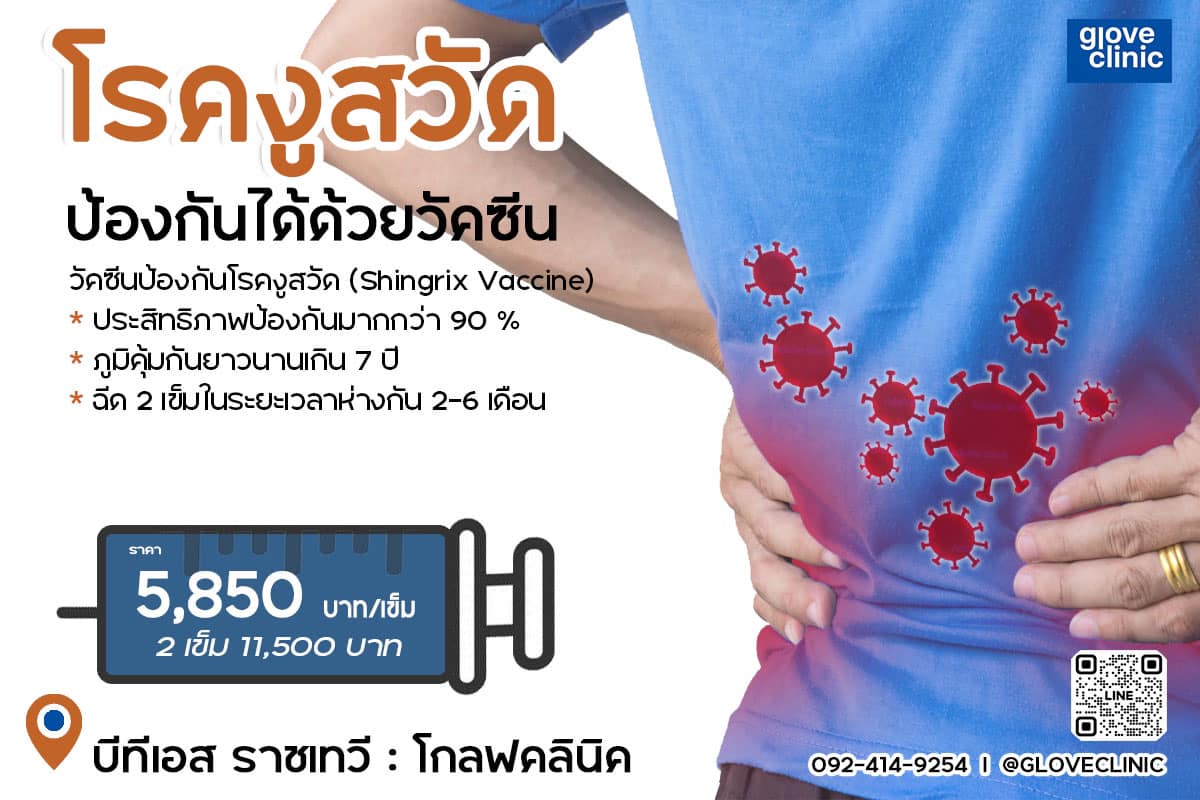
ฉีดวัคซีนงูสวัดที่ glove clinic
งูสวัดคือไวรัสชนิดหนึ่ง (Herpes zoster) ซึ่งเป็นเชื้อไวรัสตัวเดียวกันกับอีสุกอีใส (Varicella zoster) เมื่อเราติดเชื้อไวรัสอีสุกใสในวัยเด็กแล้ว ไวรัสสามารถที่จะหลบซ่อนได้ในร่างกายเป็นเวลานานหลายปี จนกระทั่งเมื่อร่างกายอ่อนแอ ไวรัสนั้นจึงออกมาทำให้เกิดอาการตุ่มน้ำใส ปวดแสบร้อนตามบริเวณที่เส้นประสาทต่าง ๆ ของร่างกายซึ่งเรียกกันว่างูสวัด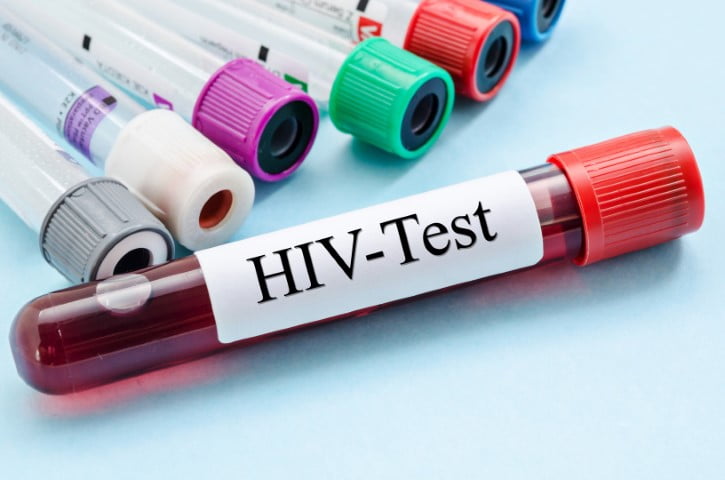
ตรวจ HIV รีวิวความรู้สำหรับการตรวจเอชไอวี (HIV test)
เอชไอวีคือไวรัสที่สามารถติดต่อได้จากการมีเพศสัมพันธ์, การใช้เข็มฉีดยาร่วมกัน, และการติดจากแม่สู่ลูก เมื่อติดเชื้อไวรัส HIV ไวรัสจะทำให้ภูมิคุ้มกันของร่างกายอ่อนแอลง และติดเชื้อโรคอื่น ๆ ได้ง่าย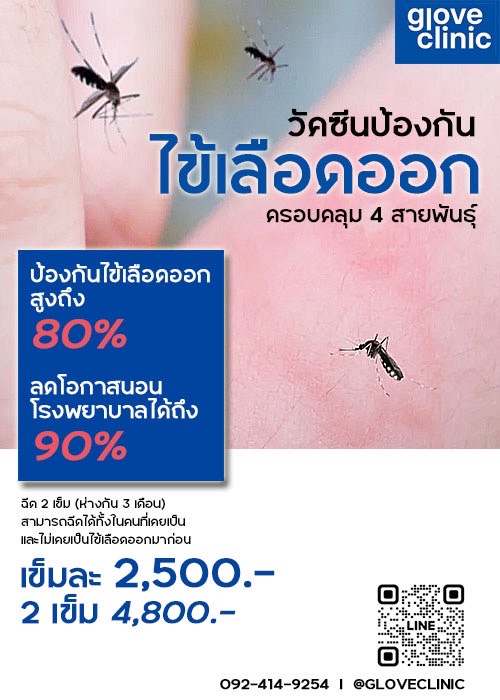
ปีนี้มีคนไข้ป่วยด้วยไข้เลือดออกมากกว่า 2-3 ปีที่ผ่านมา
เนื่องจากว่าผู้คนกลับมาใช้ชีวิตปกติ มีการเดินทาง จึงพบการระบาดมากขึ้น โดยจากสถิติของกรมควบคุมโรคพบว่ามีผู้ป่วยด้วยไข้เลือดออกในประเทศไทยเกินกว่า 60,000 รายไปแล้วทั้งปี 2566 ไข้เลือดออกเป็นโรคที่ก่อให้เกิดความรุนแรงได้ทั้งในเด็กและผู้ใหญ่ โดยเฉพาะอย่างยิ่งในคนที่เป็นซ้ำครั้งที่ 2 จะมีโอกาสเกิดภาวะช๊อคและเสียชีวิตได้มากขึ้น (โอกาสเสียชีวิตอยู่ราว ๆ 1:1,000) วัคซีนไข้เลือดออกรุ่นใหม่สามารถครอบคลุมได้ทั้ง 4 สายพันธุ์และทั้งนี้ผลการศึกษาพบว่าช่วยป้องกันการติดเชื้อได้ถึง 80% และลดโอกาสการนอนโรงพยาบาลได้ถึง 90% นอกจากนี้ยังสามารถฉีดได้ทั้งในคนที่เคยและไม่เคยเป็นไข้เลือดออกมาก่อน (วัคซีนไข้เลือดออกรุ่นเก่าไม่ควรฉีดในคนที่ยังไม่เคยเป็นไข้เลือดออก) สอบถามข้อมูลเพิ่มเติมเรื่องวัคซีนไข้เลือดออกได้ที่ 092-414-9254, Line Official @gloveclinic (มีแอดข้างหน้า)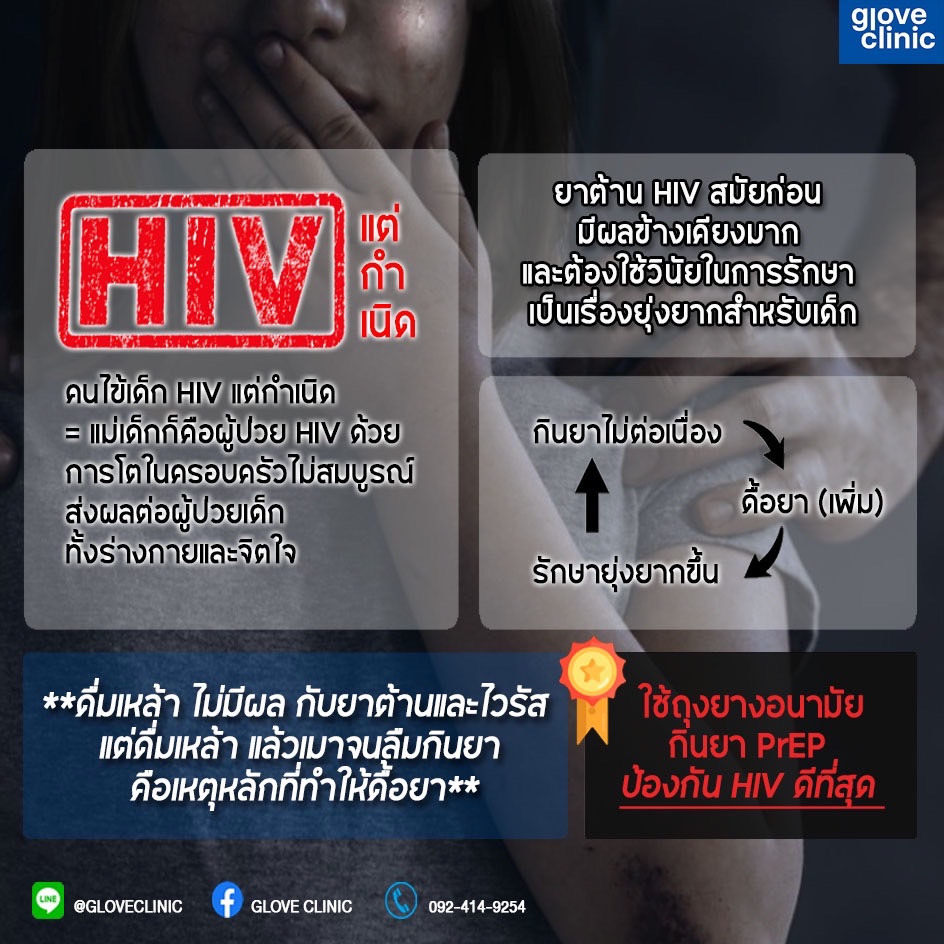
HIV แต่กำเนิด
ประเด็นร้อนที่ได้รับการพูดถึงอย่างมากในโลกออนไลน์ที่มีข้อความของนักศึกษาหญิงเปิดเผยว่าตัวเธอเองได้มีเพศสัมพันธ์แบบ one night stand เวลาไปเที่ยวกลางคืนบ่อยครั้ง และได้บอกความจริงว่าเธอเองมีเชื้อ HIV
อาการของเอดส์เป็นอย่างไร ทำความรู้จักกับเอดส์
เอดส์ คืออะไร แท้จริงแล้วเอดส์ไม่ใช่โรค หากแต่คือระยะสุดท้ายของการติดเชื้อ HIV ซึ่ง HIV นั่นเองคือไวรัสที่ทำลายภูมิคุ้มกันของร่างกาย โดยเซลล์หลักที่ถูกเล่นงานโดยไวรัสก็คือเม็ดเลือดขาว CD4 ซึ่งเป็นเซลล์ที่บัญชาการระบบภูมิคุ้มกันของร่างกาย ซึ่งเอดส์ในภาษาอังกฤษก็คือ AIDS ย่อมาจาก Acquired immunodeficiency syndrome กำเนิดของการเรียกชื่อว่าเอดส์ เดือนมิถุนายน ค.ศ. 1981 ในวารสารของกรมควบคุมโรค ประเทศสหรัฐอเมริกาได้รายงานว่ามีเกย์หนุ่ม 5 คนมีอาการปอดอักเสบจากเชื้อรา และได้รับการรักษาในโรงพยาบาลที่ Los Angeles โดย 2 รายเสียชีวิต และนอกจากนี้ทั้ง 5 คนยังพบการติดเชื้อไวรัส CMV และมีเชื้อราในช่องปากร่วมด้วย ซึ่งเชื้อต่าง ๆ ที่เล่ามานั้นมักเจอในผู้ป่วยที่มีภูมิคุ้มกันบกพร่อง ในขณะนั้นโลกยังไม่ได้รู้จักกับไวรัส HIV ว่าเป็นสาเหตุตั้งต้นของสิ่งที่เกิดขึ้น การเรียกภาวะนี้ในยุคแรกจึงได้เรียกว่า AIDS หรือ “เอดส์” ซึ่งย่อมาจาก acquired immunodeficiency syndrome อาการของเอดส์แตกต่างกับ HIV ยังไง เอดส์คือชื่อระยะที่ 3…